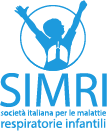Introduction to Pediatric Bronchiectasis: Importance of Physiotherapy and Exercise
Pediatric bronchiectasis is a chronic respiratory condition characterized by abnormal airway dilation, leading to recurrent infections and difficulties in mucus clearance. This condition significantly impacts children’s quality of life, causing frequent episodes of productive cough, dyspnea, and reduced physical capacity. The management of bronchiectasis focuses on interventions aimed at reducing inflammation, improving lung function, and preventing exacerbations. Two key strategies in this context are airway clearance techniques (ACTs) and regular physical exercise. However, the adoption of these strategies varies among patients, and studies aim to identify the predictive factors influencing their use. This article examines data from the Australian Bronchiectasis Registry to describe current practices regarding ACT use and physical exercise in children with this condition and to identify predictors influencing their adoption.
Study Methodology: Data from the Australian Bronchiectasis Registry
The study analyzed data from 397 children enrolled in the Australian Bronchiectasis Registry. Demographic, clinical, and therapy-related data were collected, including the frequency and type of ACTs and physical activity performed. A multivariate analysis identified predictors associated with regular ACT and exercise use, considering variables such as age, presence of Pseudomonas aeruginosa infection, number of hospitalizations due to respiratory exacerbations, and the extent of lung involvement.
Results: Adoption and Predictors of Airway Clearance Techniques (ACTs)
Data showed that only 30% of children regularly use ACTs. Physical exercise emerged as the most commonly adopted technique, either independently or in combination with other methods such as postural drainage, percussion, and the Active Cycle of Breathing Technique (ACBT). Among airway clearance devices, positive expiratory pressure (PEP) masks were the most commonly used (23% of patients). The analysis revealed that regular ACT use is more common in children with Pseudomonas aeruginosa infection and those with a higher number of respiratory exacerbations in the previous year. Additionally, a decline in ACT adherence with increasing age was observed, suggesting that adolescents tend to neglect these techniques compared to younger children.
Results: Engagement in Physical Exercise and Influencing Factors
Forty-eight percent of children reported engaging in regular physical exercise. Age was found to be a positive predictor of exercise engagement, indicating that older children are more likely to participate in physical activities. However, frequent hospitalizations for respiratory exacerbations showed a negative correlation with regular exercise practice. This finding suggests that disease severity may limit children’s ability or motivation to engage in physical activity. Among the most commonly practiced activities were swimming, walking, cycling, and running, although many participants reported engaging in other unspecified forms of exercise.
Discussion: Factors Affecting Adherence to ACTs and Exercise in Pediatric Patients
The adoption of ACTs and physical exercise varies significantly among children with bronchiectasis. The analysis suggests that children with chronic Pseudomonas aeruginosa infections and those with frequent hospitalizations are more likely to use ACTs. However, paradoxically, these same children are less likely to engage in regular physical activity. This may be due to greater disease severity, which limits their physical capacity, or to a lack of emphasis by healthcare providers and families on encouraging exercise compared to traditional ACTs. The decline in ACT adherence with age highlights the importance of targeted educational strategies for adolescents to encourage them to maintain a regular disease management routine. Additionally, the growing popularity of exercise as an airway clearance modality suggests the need for further research to evaluate its effectiveness and establish clear guidelines.
Conclusion
Only one-third of children with bronchiectasis regularly use ACTs, while half engage in physical exercise. Identifying predictive factors can help develop more effective management strategies. Adolescents tend to neglect ACTs, while children with more severe disease practice less physical exercise. Further studies are needed to better understand the role of exercise as an airway clearance modality and to develop personalized interventions that promote adherence to therapies.
Bibliography
- Webb EM, Holland AE, Chang AB, et al. Pediatric physiotherapy management of airway clearance therapy and exercise: Data from the Australian Bronchiectasis Registry. Pediatr Pulmonol. 2025;60(1):e27370. doi:10.1002/ppul.27370
No metadata found.



